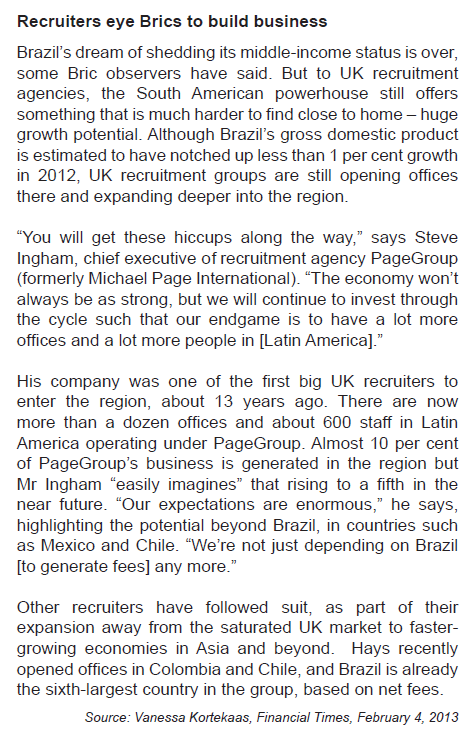Acid rain and… the facts
www.acidrain.org.ca / Oxford Children´s Encyclopedia
What causes acid rain?
Acid rain is caused by air pollution. When fossil fuels such as coal and oil are burned, two gases, sulphur dioxide and nitrogen oxide, are released into the atmosphere. These two pollutants eventually react with the moisture in the air. When this polluted mixture falls onto the ground, it is called acid rain.
Rain measuring between 0 and 5 on the pH scale, is acidic therefore called ACID RAIN
Acid rain is harmful to the environment. It is hard to control because it may be blown by the wind, falling thousands of kilometers from where it was first formed. For example, much of the acid rain in Canada is caused by smoke from factories and power‐stations in the USA. The acid rain in Scandinavia may come from Britain.
What are the effects of acid rain?
Acid rain has many different effects. It has killed fish in the lakes of North America, Scandinavia, Scotland, and Wales. Vast areas of forest in northern and central Europe are dying because of it, while in many European cities statues and stone buildings are being eaten away by the acid. Acid rain corrodes metalwork such as steel bridges and railings; it also attacks some types of concrete. Even the water that we drink is slowly being polluted by acid rain.
What are the effects on trees and soil?
One of the most serious impacts of acid precipitation is on forests and soils. Great damage is done when sulphuric acid falls onto the earth as rain. Nutrients present in the soils are washed away. Aluminium also present in the soils is freed and this toxic element can be absorbed by the roots of trees. Thus, the trees starve to death because they have been deprived of their vital nutrients such as calcium and magnesium.
Acid rain is one of the most serious environmental problems of our time. It is a global problems that is gradually affecting our world.
How does acid rain effect lakes?
Lakes that have been acidified cannot support the same variety of life as healthy lakes. As a lake becomes more acidic, various types of fish disappear. Other effects of acidified lakes on fish include: decreased growth, inability to regulate their own body chemistry, reduced egg deposition, deformities in young fish and increased susceptibility to naturally occurring diseases.
Clean rain usually has a pH of 5.6. It is slightly acidic because of carbon dioxide which is naturally present in the atmosphere. Vinegar, by comparison, is very acidic and has a pH of 3.
What is pH?
This is a measure of how acidic or alkaline a substance is. (See a pH scale below). The initials pH stand for Potential of Hydrogen. Acids have pH values under 7, and alkalis have pH values over 7. If a substance has a pH value of 7. It is neutral‐neither acidic or alkaline.

Because the pH scale is logarithmic, a difference of one pH unit represents a tenfold, or ten times change. For example, the acidity of a sample with a pH of 5 is ten times greater than that of a sample with a pH of 6. A difference of 2 units, from 6 to 4, would mean that the acidity in one hundred times greater, and so on.
A difference of four units, from six to two, means that the acidity is
Acid rain and… the facts
www.acidrain.org.ca / Oxford Children´s Encyclopedia
What causes acid rain?
Acid rain is caused by air pollution. When fossil fuels such as coal and oil are burned, two gases, sulphur dioxide and nitrogen oxide, are released into the atmosphere. These two pollutants eventually react with the moisture in the air. When this polluted mixture falls onto the ground, it is called acid rain.
Rain measuring between 0 and 5 on the pH scale, is acidic therefore called ACID RAIN
Acid rain is harmful to the environment. It is hard to control because it may be blown by the wind, falling thousands of kilometers from where it was first formed. For example, much of the acid rain in Canada is caused by smoke from factories and power‐stations in the USA. The acid rain in Scandinavia may come from Britain.
What are the effects of acid rain?
Acid rain has many different effects. It has killed fish in the lakes of North America, Scandinavia, Scotland, and Wales. Vast areas of forest in northern and central Europe are dying because of it, while in many European cities statues and stone buildings are being eaten away by the acid. Acid rain corrodes metalwork such as steel bridges and railings; it also attacks some types of concrete. Even the water that we drink is slowly being polluted by acid rain.
What are the effects on trees and soil?
One of the most serious impacts of acid precipitation is on forests and soils. Great damage is done when sulphuric acid falls onto the earth as rain. Nutrients present in the soils are washed away. Aluminium also present in the soils is freed and this toxic element can be absorbed by the roots of trees. Thus, the trees starve to death because they have been deprived of their vital nutrients such as calcium and magnesium.
Acid rain is one of the most serious environmental problems of our time. It is a global problems that is gradually affecting our world.
How does acid rain effect lakes?
Lakes that have been acidified cannot support the same variety of life as healthy lakes. As a lake becomes more acidic, various types of fish disappear. Other effects of acidified lakes on fish include: decreased growth, inability to regulate their own body chemistry, reduced egg deposition, deformities in young fish and increased susceptibility to naturally occurring diseases.
Clean rain usually has a pH of 5.6. It is slightly acidic because of carbon dioxide which is naturally present in the atmosphere. Vinegar, by comparison, is very acidic and has a pH of 3.
What is pH?
This is a measure of how acidic or alkaline a substance is. (See a pH scale below). The initials pH stand for Potential of Hydrogen. Acids have pH values under 7, and alkalis have pH values over 7. If a substance has a pH value of 7. It is neutral‐neither acidic or alkaline.

Because the pH scale is logarithmic, a difference of one pH unit represents a tenfold, or ten times change. For example, the acidity of a sample with a pH of 5 is ten times greater than that of a sample with a pH of 6. A difference of 2 units, from 6 to 4, would mean that the acidity in one hundred times greater, and so on.
Acid rain does NOT cause
Acid rain and… the facts
www.acidrain.org.ca / Oxford Children´s Encyclopedia
What causes acid rain?
Acid rain is caused by air pollution. When fossil fuels such as coal and oil are burned, two gases, sulphur dioxide and nitrogen oxide, are released into the atmosphere. These two pollutants eventually react with the moisture in the air. When this polluted mixture falls onto the ground, it is called acid rain.
Rain measuring between 0 and 5 on the pH scale, is acidic therefore called ACID RAIN
Acid rain is harmful to the environment. It is hard to control because it may be blown by the wind, falling thousands of kilometers from where it was first formed. For example, much of the acid rain in Canada is caused by smoke from factories and power‐stations in the USA. The acid rain in Scandinavia may come from Britain.
What are the effects of acid rain?
Acid rain has many different effects. It has killed fish in the lakes of North America, Scandinavia, Scotland, and Wales. Vast areas of forest in northern and central Europe are dying because of it, while in many European cities statues and stone buildings are being eaten away by the acid. Acid rain corrodes metalwork such as steel bridges and railings; it also attacks some types of concrete. Even the water that we drink is slowly being polluted by acid rain.
What are the effects on trees and soil?
One of the most serious impacts of acid precipitation is on forests and soils. Great damage is done when sulphuric acid falls onto the earth as rain. Nutrients present in the soils are washed away. Aluminium also present in the soils is freed and this toxic element can be absorbed by the roots of trees. Thus, the trees starve to death because they have been deprived of their vital nutrients such as calcium and magnesium.
Acid rain is one of the most serious environmental problems of our time. It is a global problems that is gradually affecting our world.
How does acid rain effect lakes?
Lakes that have been acidified cannot support the same variety of life as healthy lakes. As a lake becomes more acidic, various types of fish disappear. Other effects of acidified lakes on fish include: decreased growth, inability to regulate their own body chemistry, reduced egg deposition, deformities in young fish and increased susceptibility to naturally occurring diseases.
Clean rain usually has a pH of 5.6. It is slightly acidic because of carbon dioxide which is naturally present in the atmosphere. Vinegar, by comparison, is very acidic and has a pH of 3.
What is pH?
This is a measure of how acidic or alkaline a substance is. (See a pH scale below). The initials pH stand for Potential of Hydrogen. Acids have pH values under 7, and alkalis have pH values over 7. If a substance has a pH value of 7. It is neutral‐neither acidic or alkaline.

Because the pH scale is logarithmic, a difference of one pH unit represents a tenfold, or ten times change. For example, the acidity of a sample with a pH of 5 is ten times greater than that of a sample with a pH of 6. A difference of 2 units, from 6 to 4, would mean that the acidity in one hundred times greater, and so on.
It is true that clean rain

1. The ECOWAS COMMISSION has allocated own funds towards the cost of the Supply, Deployment & Installation of Network Equipment at the ECOWAS Commission Headquarters Data Centre, Abuja.
2. The ECOWAS Commission therefore invites sealed bids for the Supply, Deployment & Installation of Network Equipment at the ECOWAS Commission Headquarters Data Centre, Abuja described above in one lot.
3. The Bidding Document can be obtained at the Procurement Division, Directorate of General Administration, ECOWAS Commission, Plot 101, Yakubu Gowon Crescent, Asokoro District, Abuja, Nigeria, upon submission of a written request and payment of three hundred US Dollars (US$300.00) by Cash or Bank Draft made in favour of ECOWAS Commission, Abuja.
4. For Bidders outside Nigeria, the Bidding Document can be mailed to interested Bidders upon payment (by Transfer) of non‐refundable fee of US$300.00 to the Commission (transfer charges born by the bidder). (Account Details available on request.)
5. Interested Bidders may obtain further information at the address below, during office hours: Monday to Friday from 9.00am (8.00am GMT+1) to 4.00pm (3.00pm GMT+1), ECOWAS Commission, Directorate of General Administration, Procurement Division, 1st Floor, Plot 101, Yakubu Gowon Crescent, Asokoro District, PMB 401 Abuja Nigeria.
E‐mail: [email protected]
6. Bids shall be valid for a period of 120 (days) after Bid Opening and must be accompanied by a bid security of US$20,000.00 (Bank Guarantee or Insurance Bond).
7. Bids shall be delivered in sealed envelope and deposited in the ECOWAS Tender Box located Office of the Executive Assistant of Commissioner of Administration & Finance, fifth (5th) floor of the ECOWAS Commission Building, 101, Yakubu Gowon Crescent Asokoro District, P. M. B. 401, Abuja, Nigeria on or before November 7, 2013 at 11.30am (10.30am GMT+1) and clearly marked “International Competitive Bidding for the Production of ECOWAS Biometric Laissez Passer and Supply of Equipment” Do Not Open, Except in Presence of the Committee.
8. Bids will be opened in the presence of the bidders who wish to attend on November 7, 2013 at 12.00 noon (11.00am GMT+1), Room 523, Ecowas Commission, Abuja, Nigeria.
(The Economist, September 4th, 2013. Page 86. Adaptado.)
The ECOWAS Commission is inviting bids for a(an)
Questions 34 through 38 refer to the following text.
We've been keeping our veterinarian in business lately.
First Sammy, our nine-year-old golden retriever, needed
surgery. (She's fine now.) Then Inky, our curious cat,
burned his paw. (He'll be fine, too.) At our last visit, as we
were writing our fourth (or was it the fifth?) consecutive
check to the veterinary hospital, there was much joking
about how vet bills should be tax-deductible. After all, pets
are dependents, too, right? (Guffaws all around.)
Now, halfway through tax-filing season, comes news
that pets are high on the list of unusual deductions
taxpayers try to claim. From routine pet expenses to the
costs of adopting a pet to, yes, pets as "dependents," tax
accountants have heard it all this year, according to the
Minnesota Society of Certified Public Accountants, which
surveys its members annually about the most outlandish
tax deductions proposed by clients. Most of these doggy
deductions don't hunt, but, believe it or not, some do. Could
there be a spot for Sammy and Inky on our 1040?
Scott Kadrlik, a certified public accountant in Eden Prairie,
Minn., who moonlights as a stand-up comedian (really!),
gave me a dog's-eye view of the tax code: "In most cases
our family pets are just family pets," he says. They cannot
be claimed as dependents, and you cannot deduct the
cost of their food, medical care or other expenses. One
exception is service dogs. If you require a Seeing Eye
dog, for example, your canine's costs are deductible as
a medical expense. Occasionally, man's best friend also
is man's best business deduction. The Doberman that
guards the junk yard can be deductible as a business
expense of the junk-yard owner, says Mr. Kadrlik. Ditto the
convenience-store cat that keeps the rats at bay.
For most of us, though, our pets are hobbies at most.
Something's a hobby if, among other things, it hasn't turned
a profit in at least three of the past five years (or two of the
past seven years in the case of horse training, breeding
or racing). In that case, you can't deduct losses—only
expenses to the extent of income in the same year. So if
your beloved Bichon earns $100 for a modeling gig, you
could deduct $100 worth of vet bills (or dog food or doggy
attire).
(Source: Carolyn Geer, The Wall Street Journal, retrieved on 13 March
2014 - slightly adapted)
The opening sentence of the text reveals that the author has been

Judge the following items concerning the text above.
Some of the street artists were fierce critics of Mubarak, and then they decided to demonstrate their anger through their art.

According to the text above, judge the following items.
The deal made with Capio prevented the hospital from being closed.
THERE ARE 5 QUESTIONS OF MULTIPLE CHOICE IN YOUR TEST. EACH QUESTION HAS 4
ALTERNATIVES (A, B, C, AND D) FROM WHICH ONLY ONE IS CORRECT. CHECK THE CORRECT
ONE.
Don't Get Sick in July
By Theresa Brown
Published: July 15, 2012
It's one of those secrets you normally don't learn in nursing school: ''Don't go to the hospital in
July.'' That's the month when medical residents, newly graduated from medical school, start learning how
to be doctors, and they learn by taking care of patients. And learning means making mistakes.
There's disagreement in the medical literature about whether a so-called July Effect, where
medical error rates increase in the summer, actually exists. But a 2010 article in the Journal of General
Internal Medicine and a 2011 article in the Annals of Internal Medicine both found evidence of it. In an
interview, Dr. John Q. Young, lead author of the latter review, likened the deployment of new residents to
having rookies replace seasoned football players during ''a high-stakes game, and in the middle of that
final drive.''
From what I've experienced as a clinical nurse, whether or not the July Effect is statistically
validated as a cause of fatal hospital errors, it is undeniably real in terms of adequacy and quality of care
delivery. Any nurse who has worked in a teaching hospital is likely to have found July an especially
difficult month because, returning to Dr. Young's football metaphor, the first-year residents are calling the
plays, but they have little real knowledge of the game.
This experience deficit plays out in ways large and small, but I remember an especially fraught
situation one July when a new resident simply did not know enough to do his job and a patient quite
literally suffered as a result.
The patient was actively dying. He was old and his death was expected. He had kept his cancer
at bay for several years, but there were no more curative treatment options left and he had opted to die
peacefully in his bed, surrounded by his family. He had also wanted to die in the hospital, and his death
was coming on quickly enough that the hospital decided to allow it. He was grumpy, charming, funny and
impressively clear-eyed about the end of his life. During our brief, two-day acquaintance I developed a
strong attachment to him.
Death came closer quickly on that second day and as it neared, his pain increased significantly.
Dying from cancer often hurts. He needed oxygen to breathe comfortably, and because he was alert he
fully felt the intense pain.
I'm a nurse, so legally I cannot decide to increase a patient's dose of pain medication, but I can
call a physician and describe the patient's distress. That's part of a nurse's job, but there is also a chain
of command for getting medication orders, and another part of my job is adhering to that hierarchy.
I paged the first-year resident covering the patient. Since it was July he was an M.D. on the
books, but he was brand new to actual doctoring. I explained things, but he would not increase the
ordered dose. I paged him again. We talked over the phone, and I insisted. Then I pleaded. He would
not up the dose.
Looking at the situation from his point of view, I understand his reluctance. I was asking him to
prescribe a very large dose of narcotic, a killingly big dose if the patient was unused to opioids. The
resident might have learned in medical school about pain during dying, but he had not actually been with
a patient going through it. Seeing such pain -- the body twisting, the patient crying out helplessly -- is
categorically different from reading about it.
I also imagine the resident had been taught to prescribe narcotics judiciously, perhaps even
sparingly, and the amount of drug I was asking for was neither.
The patient's wife was kind; his daughter, a nurse, forthright. They and he deserved better than
they were getting, so I decided to take a risk. Ignoring the chain of command, I paged the palliative care
physician on call. She and I had talked about the patient the day before.
I described the patient's sudden lurch toward death, the sharp increase in pain and the resident's
reluctance to medicate the patient enough to give him relief. ''Ah,'' she said, ''I was worried about that,''
meaning that the patient might begin actively dying sooner than the medical team had expected. She
ordered a morphine pump. I got the drug, loaded and programmed the machine. The patient died fairly
soon after. He was conscious to the very end, and I can say he did not meet his death in agonizing pain.
A few hours later I ended up in the elevator with the new resident. He and I both started talking at
once. Looking stricken, he apologized to me for having been busy, overwhelmed with several new
patients. Knowing it is never easy to have someone's footprint on your head, I apologized for having
called in an attending physician. ''I don't usually jump the line,'' I started to explain, when he interrupted
me. ''You did the right thing for the patient,'' he said.
Such an exchange is rare. A nurse who goes over a doctor's head because she finds his care
decisions inappropriate risks a charge of insubordination. A resident who doesn't deliver good care risks
the derision of the nurse caring for that patient. Nurses aren't typically consulted about care decisions,
and this expectation of silence may lead them to lash out at doctors they see as inadequate.
The July Effect brings into sharp relief a reality of hospital care: care is becoming more
specialized, and nurses, who sometimes have years of experience, often know more than the greenest
physicians. We know about medicating dying patients for pain, but we know a lot of other things, too:
appropriate dosages for all kinds of drugs, when transfusions and electrolyte replacements are needed,
which lab tests to order and how to order them, whether consulting another specialist is a good idea,
whether a patient needs to go to intensive care because his vital signs are worryingly unstable.
The problem can be limited by better supervision from senior residents, fellows and attending
physicians, as well as by nurses. We need to acknowledge this fact, because admitting that new
residents need help, and that nurses can and do help them, is the beginning of owning up to our shared
responsibilities in providing care. For the good of our patients, nurses and doctors need to collaborate.
(http://query.nytimes.com/gst/fullpage.html?res=9C02E3DB143FF936A25754C0A9649D8B63&ref=nursingandnurses)
The situation described in the text by the author is an evidence that
The overall purpose of the text is to show that the UK recruitment industry
Read the text below and answer the question that follow.

According to the text, Malala was worried because:
Read the text below and answer the question that follow

The title of the text refers to two different pieces of news, which are, respectively:
Judge the item according to the text above.
The Chinese public opinion forced the government to adopt a reforestation programme.
Judge the item according to the text above.
China is an important exporter of wooden goods.






